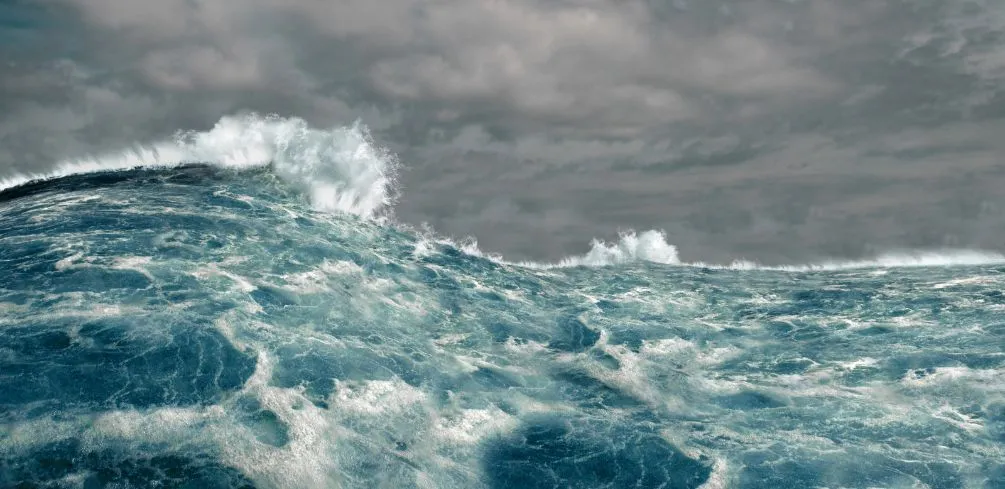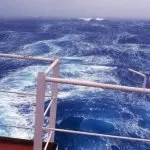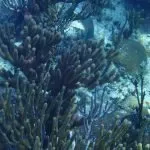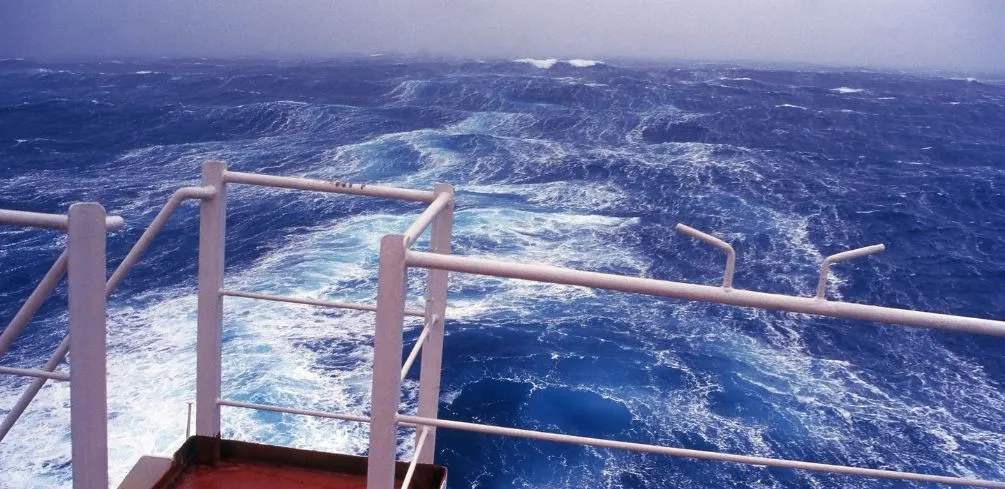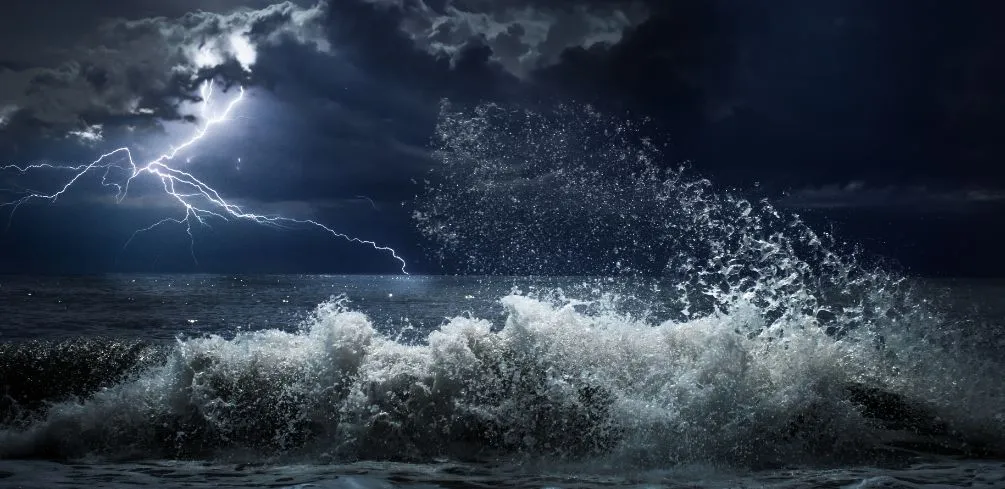The ocean is a mysterious and powerful place. It’s home to diverse wildlife, plants, and ecosystems that have captivated us since the dawn of time. But what happens when storms rage through its depths?
How do they impact the lives of ocean creatures, both large and small? In this article, we’ll explore how storms affect the ocean’s inhabitants, from coral reefs to whales.
When a storm passes through the open seas, it brings with it waves of turbulence and chaos. But there is more to these tempests than meets the eye; they can also bring about changes in temperature, salinity levels, and water currents that could have a significant effect on sea life.
The most powerful storms can cause extensive damage to habitats such as coral reefs, while even milder storms can disrupt food sources or force animals out of their natural habitats.
The effects of storms on ocean life depend largely on the individual species’ ability to adapt and survive in new environments. Some creatures may be able to ride out the storm without harm; others may suffer serious injury or death from the turbulent waters or lack of food sources afterward. In any case, it is clear that our oceans are vulnerable to the whims of nature – but with careful observation and conservation efforts, we can help protect them for generations to come.
Definition
Have you ever been awestruck by the power of a storm? Have you ever wondered what impact such a force of nature has on our planet’s oceans? Storms are natural disasters that can have a huge impact on ocean life.
But what exactly is a storm, and how does it differ from other weather events? A storm is an intense atmospheric disturbance characterized by strong winds, heavy rains, large amounts of lightning, and thunder. It is usually accompanied by strong gusts of wind and turbulent air masses, which can cause large waves in the ocean.
The ocean itself is defined as the body of salty water that covers more than 70% of the earth’s surface. It consists of five major oceans – the Pacific Ocean, Atlantic Ocean, Indian Ocean, Arctic Ocean, and Southern Ocean – and numerous smaller seas. Oceans are an important part of Earth’s environment and play a vital role in regulating climate as well as sustaining all living organisms on Earth.
Given these definitions, it’s clear to see how storms could have drastic impacts on our planet’s oceans. From massive waves to flooding coastal areas, storms can wreak havoc on all types of marine life. So how do storms really affect ocean life? That’s what we’ll explore next!
Effects On Marine Species
I’m sure we’ve all heard of the destructive power of storms. They can cause immense damage, oftentimes leaving behind a trail of destruction in their wake. But what many people don’t know is how storms impact ocean life.
The effects of storms on marine species can be devastating. Coastal wildlife species may be directly impacted by high winds and large waves, resulting in displacement or even death from drowning or being crushed by debris.
For offshore species, strong currents can cause large-scale migration and disrupt feeding patterns. Additionally, organisms may have to adapt quickly to changing temperatures and salinity levels caused by storm surges.
The destruction caused by storms doesn’t stop there, though – they can also have a major effect on marine habitats. Storms can cause flooding and erosion, which destroys coral reefs and other important habitats for ocean wildlife, such as seagrass beds and kelp forests.
This type of destruction not only affects the species that live in these habitats but also has an impact on the entire food chain, leading to disruption in whole ecosystems.
In addition to this direct destruction, storms bring pollutants into the ocean, which can poison marine life and make the water uninhabitable for some organisms. This is especially true during hurricane season when runoff from land carries an abundance of contaminants into bodies of water across the globe.
To summarize:
- Storms can cause direct displacement or death for coastal wildlife species due to high winds and large waves.
- Strong currents caused by storms can lead to large-scale migration and disruption in feeding patterns for offshore species.
- Storms destroy important habitats for ocean wildlife, such as coral reefs, seagrass beds, and kelp forests, leading to disruption in whole ecosystems.
- Pollutants brought into bodies of water by storms poison marine life and make it uninhabitable for some organisms.
Changes In Water Quality
Now, let’s look at the changes in water quality that storms can cause. It may seem counterintuitive that storms while cleansing the air and replenishing the soil with fresh rain, could have a negative impact on ocean life. But it’s true that storms can create water pollution, which has a detrimental effect on marine species.
The most common type of storm-related water contamination is runoff. When heavy rains come down, they wash away all kinds of pollutants from the land into streams and rivers, which then flow directly into the ocean.
These pollutants can range from fertilizer to oil or grease and even dangerous chemicals like pesticides or heavy metals. As these toxins make their way into the ocean, they can poison fish, shellfish, sea birds, and other aquatic creatures that rely on clean water to survive.
The best way to prevent this kind of storm-related water pollution is through proper land management practices that reduce runoff before it enters a body of water. This could include anything from planting trees along rivers that act as natural filters to creating buffer zones between urban areas and bodies of water so pollutants don’t enter them directly.
By implementing these strategies now and in the future, we can minimize storm-induced changes in ocean water quality and help ensure healthier oceans for generations to come.
Coastal Erosion
Storms can cause coastal erosion in a variety of ways. Storm surges, for example, occur when high winds and low-pressure systems combine to push large amounts of water onto the coastline. This can lead to erosion patterns that are difficult to predict, as the force and direction of the surging water can change quickly due to atmospheric conditions.
Wave energy also plays an important role in coastal erosion during storms. The powerful waves generated by extreme weather can erode large areas of coastline very quickly, often resulting in cliffs that have been worn away or beaches that have been significantly reduced in size.
In order to protect shorelines from coastal erosion caused by storms, a variety of methods are employed. These include beach nourishment (adding sand to existing beaches), construction of artificial reefs and breakwaters (which absorb wave energy), and building dunes along the shoreline (which act as barriers against storm surges).
All of these measures help reduce the impact of storms on our coastlines and can help prevent further erosion.
These strategies should be used in combination with other practices, such as coastal management plans, which aim to protect vulnerable areas from flooding, sea-level rise, and other forms of damage caused by extreme weather events. In doing so, we can help ensure that our coasts remain resilient against future storms while also preserving their natural beauty for generations to come.
Preparing For Storms
Preparing for storms is a vital task that cannot be taken lightly. As sea levels rise and more coastal areas face the risk of flooding, it is essential to be proactive in our storm preparedness. From hurricane preparation to general flooding readiness, there are several steps we can take to ensure that we are ready for whatever Mother Nature has in store.
The first step in preparing for storms is to create an emergency plan. This should include items such as evacuation routes, a list of important documents, and supplies needed in the event of an emergency.
Additionally, it’s important to map out where your family will meet if you become separated during an evacuation or storm event. Preparing ahead of time and having a plan will help reduce stress and confusion if a storm does hit your area.
It’s also critical to stay up-to-date with local weather forecasts and warnings from the National Weather Service (NWS). NWS offers information about current conditions as well as potential hazards that may come with approaching storms. By staying informed, you can better prepare yourself and your family for any potential risks associated with the storm.
Having an emergency kit on hand is another important part of preparing for storms. Your kit should include items such as non-perishable food, water, flashlights, batteries, first aid supplies, tools, and other necessary items that you may need when evacuating or during a storm event. It’s important to make sure these items are easily accessible in case of an emergency situation so they can be grabbed quickly when needed.
Taking these precautions will help make sure you have everything you need when facing the elements brought on by powerful storms.
Frequently Asked Questions
What Is The Most Destructive Type Of Storm For Ocean Life?
When it comes to natural disasters, storms are some of the most destructive forces in nature. Hurricanes, typhoons, tidal waves, storm surges, and monsoons can wreak havoc on oceans and their inhabitants. The question is: which type of storm has the most devastating impact on ocean life?
The answer lies in a combination of several factors. For example, hurricanes cause extreme winds and flooding that can wipe out the marine life in an instant.
Storm surges bring walls of water crashing onto coastal areas, wiping out everything in their path. Typhoons also bring fierce winds and flooding that can be devastating for coastal communities and sea life alike.
Tidal waves pose a different kind of threat to ocean life due to their immense power. They can move miles inland, destroying anything in their way as they go. Monsoons also bring huge amounts of rain that can cause deadly floods and even landslides near the coast. Altogether, these storms have the potential to do serious damage to oceanic ecosystems around the world.
It’s clear that all types of storms have a significant impact on ocean life – each one bringing with it its own unique set of risks for marine ecosystems. Knowing what type of storm you’re dealing with is key to understanding the potential consequences for ocean life and coastal communities alike.
Taking action before disaster strikes is critical for minimizing damage from any storm-related event and protecting our precious marine resources for future generations.
How Can Ocean Life Be Protected From Storms?
When it comes to protecting ocean life from the destructive effects of storms, there are several strategies that can be employed. Storm protection, ocean life preservation, storm mitigation, and ocean conservation are all important considerations when looking to safeguard our precious marine ecosystems from the ravages of extreme weather.
Coastal protection is also key to ensuring the survival of vulnerable marine species. The construction of coastal barriers such as sea walls or breakwaters can help mitigate the impact of storms on lower-lying areas, as well as provide habitats for wildlife. In addition, planting mangroves and other vegetation in coastal regions can help absorb wave energy and reduce erosion.
The good news is that we don’t have to start from scratch: there are already a number of successful initiatives in place around the world that have helped protect ocean life from storms. For example, turtle exclusion devices have been installed on some beaches, which prevent nesting turtles from being caught up in strong currents during storm surges.
Other projects involve re-establishing coral reefs and restoring seagrass beds – both of which provide important habitats for fish and other marine creatures.
In short, while storms can have a devastating effect on our oceans and their inhabitants, there are steps we can take to protect them. By investing in coastal protection measures and implementing innovative strategies such as turtle exclusion devices, we can ensure the preservation of our valuable marine ecosystems for generations to come.
Are There Any Long-Term Effects Of Storms On Ocean Life?
It’s no secret that ocean storms can cause a great deal of damage to marine life. But have you ever thought about the long-term effects of these storms on ocean life? It’s estimated that each year, more than 5,000 square miles of coral reef are destroyed due to storms. So what are the lasting impacts of these storms on ocean ecology?
The most obvious effect of storms on ocean life is physical damage. Storms can tear apart coral reefs and other structures, leaving marine life without food or shelter. In addition, strong waves and currents can displace aquatic animals, causing them to become separated from their habitat or vulnerable to predators. But there are also less visible, long-term consequences of storms.
For example, a single storm can disrupt an entire food web by wiping out resources such as plankton or kelp beds that are essential for the survival of many species.
Finally, storm damage has a negative impact on human activities such as fishing and tourism that rely on healthy ocean ecosystems. When coral reefs and other habitats are destroyed by storms it can take years for them to recover – if they recover at all – leading to declines in fish populations and reduced revenue for local economies.
This underscores the importance of protecting ocean life before it is too late so that we can avoid devastating long-term impacts from storm damage.
How Do Storms Affect Coral Reef Ecosystems?
I’m sure you’ve heard of coral reefs and maybe even know a bit about them. But have you ever wondered how storms affect these ecosystems? The answer is that storms can have both positive and negative impacts on coral reefs. Let’s take a closer look at how storms affect coral reef ecosystems.
Coral reefs are highly sensitive to changes in their environment, so it’s no surprise that storms can cause significant damage. Storms with strong winds, heavy rains, and high waves can all cause physical damage to the reefs themselves.
This storm damage can destroy coral colonies and disrupt the delicate balance of the ecosystem. In addition, storm surges can bring pollutants from the land into the ocean, which can further harm the health of the reef system.
On the other hand, some evidence suggests that certain types of storm activity may actually benefit coral reef ecosystems by bringing in fresh water and nutrients from upwelling currents. This influx of new resources could potentially help coral reefs grow and thrive after a storm passes through an area.
Therefore, although storms certainly have the potential for destruction in regard to coral reef systems, they may also provide benefits in some cases as well.
Given all this information, it’s clear that storms have a complex relationship with coral reef ecosystems that requires careful consideration when assessing their impact. It’s important to understand both the destructive and beneficial aspects of these powerful weather events in order to maintain healthy marine environments for future generations.
Are There Ways To Mitigate The Effects Of Storms On Ocean Life?
Are there ways to mitigate the effects of storms on ocean life? Storms can have a devastating effect on ocean life and ecosystems, but luckily, there are measures that can be taken to reduce their impacts.
Here are four key steps we can take to protect our oceans:
- Implement storm prevention measures: These include creating artificial reefs and beach nourishment projects that help reduce wave action and shoreline erosion caused by storms.
- Increase ocean conservation efforts: This includes reducing water pollution, banning the use of destructive fishing practices, and protecting vulnerable habitats like coral reefs.
- Increase hurricane preparedness: This includes forecasting storms more accurately and developing strategies to help communities prepare for them.
- Invest in storm damage prevention efforts: This includes building stronger structures near coastlines to protect against flooding and wind damage as well as restoring areas affected by storms.
Taking these steps into account is critical for protecting our oceans from the impacts of storms. It’s important to remember that even though some of these measures may require considerable investment, they are necessary for long-term ocean health and resilience.
In addition, investing in these measures now will save money in the long run by reducing the need for costly repairs after a storm has passed. Ultimately, taking preventative action is the best way to ensure that our oceans remain healthy despite powerful storms.
Conclusion
It’s clear that storms have a significant impact on ocean life, and it’s important to be aware of the ways we can protect our oceans from further damage. We must be proactive in taking measures to mitigate the effects of storms so that future generations can enjoy healthy oceans and all the benefits they provide.
For example, some coastal communities are taking action by restoring their shorelines with vegetation and other natural barriers. In addition to providing protection from storm surges, these measures also help reduce erosion and create habitats for marine life. This type of work is an important step in safeguarding ocean life from storms.
Finally, we need to continue research into how storms affect ocean life and develop better strategies for protecting our precious marine ecosystems. Storms can have devastating effects on ocean life – but if we take the right steps now, we can ensure that our oceans remain healthy for generations to come.
